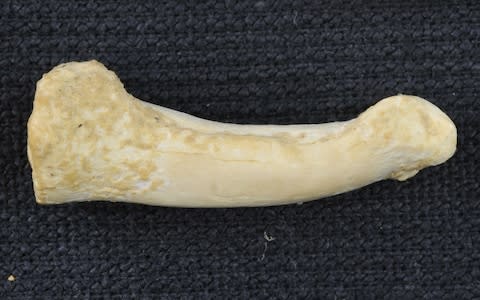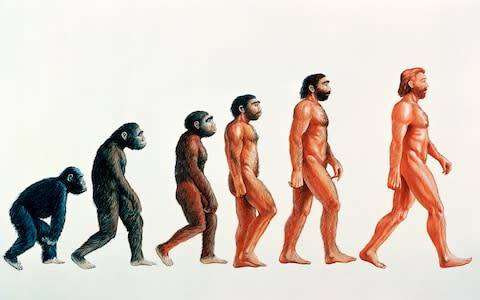New tiny human discovered which still swung in trees when Homo sapiens was walking tall

A new species of tiny human which lived at the same time as our Homo sapiens ancestors has been discovered by archaeologists.
The new hominid, named Homo luzonensis after the island of Luzon, in the Philippines, where its bones were found, stood less than 4ft tall and probably still spent time swinging from trees.
It is the smallest hominid ever found, even tinier than Homo floresiensis, nicknamed The Hobbit, due to its tiny 4ft stature, who lived in Indonesia.
Both small humans probably shrunk in a process called ‘island dwarfing’ which occurs due to limited resources when species are cut off from the mainland.
So far archaeologists have found fossil hand and foot bones, a thigh bone and seven teeth belonging to at least two adults and one juvenile but are hunting for further evidence of the species.

The bones and teeth show an odd mix of ancient hominid and modern human features including toe bones which are more curved, like australopithecus, the upright ape-like creatures which eventually evolved into man. Yet until now it was assumed australopithecines had never left Africa.
Report author Professor Philip Piper from The Australian National University (ANU) said the findings represent a major breakthrough in the understanding of human evolution.
"There are some really interesting features - for example, the teeth are really small," said Professor Piper.
"The size of the teeth generally, though not always, reflect the overall body-size of a mammal, so we think Homo luzonensis was probably relatively small. Exactly how small we don't know yet. We would need to find some skeletal elements from which we could measure body-size more precisely.
"It's quite incredible, the extremities, that is the hand and feet bones are remarkably Australopithecine-like. The Australopithecines last walked the earth in Africa about 2 million years ago and are considered to be the ancestors of the Homo group, which includes modern humans.
"So, the question is whether some of these features evolved as adaptations to island life, or whether they are anatomical traits passed down to Homo luzonensis from their ancestors over the preceding two million years."

The tiny human would have lived between 50,000 and 67,000 years old, during the same period as early modern humans, Neanderthals and a group known as the Denisovens, none of whom were still living in trees at the time. But it is unknown why they died out.
Although DNA is unlikely to survive in the damp climate archaeologists believe they may be able to find proteins in the bones that could show the relationship between Homo luzonensis and other humans.
The first hominids are thought to have diverged from apes around 6 million to 7 million years ago in Africa, and Homo erectus had reached Eurasia by around 1.8 millions years ago.
Until recently it was assumed that all hominids outside of Africa had evolved from Homo erectus, but the new findings suggest other types of hominids may also have left Africa.

Commenting on the research Matthew Tocheri at the Department of Anthropology, Lakehead University, Thunder Bay, Ontario, said: “Homo luzonensis provides yet more evidence that hints that Homo erectus might not have been the only globe-trotting early hominin
“One thing can be said for certain — our picture of hominin evolution in Asia during the Pleistocene just got even messier, more complicated and a whole lot more interesting.”
Previously archaeologists have found evidence of animal butchery dating back 700,000 years on the island of Luzon suggesting it was inhabited by early humans for hundreds of thousands of years.
The research was published in the journal Nature.
Sign up for your essential, twice-daily briefing from The Telegraph with our free Front Page newsletter.

 Yahoo News
Yahoo News 